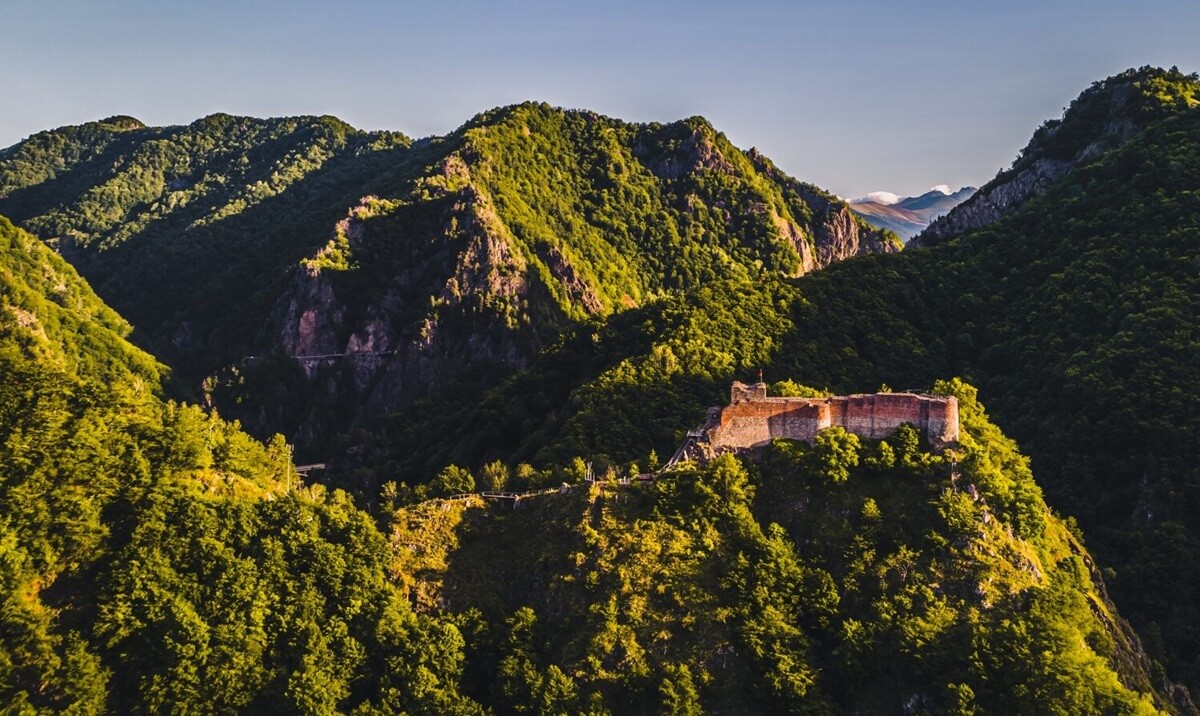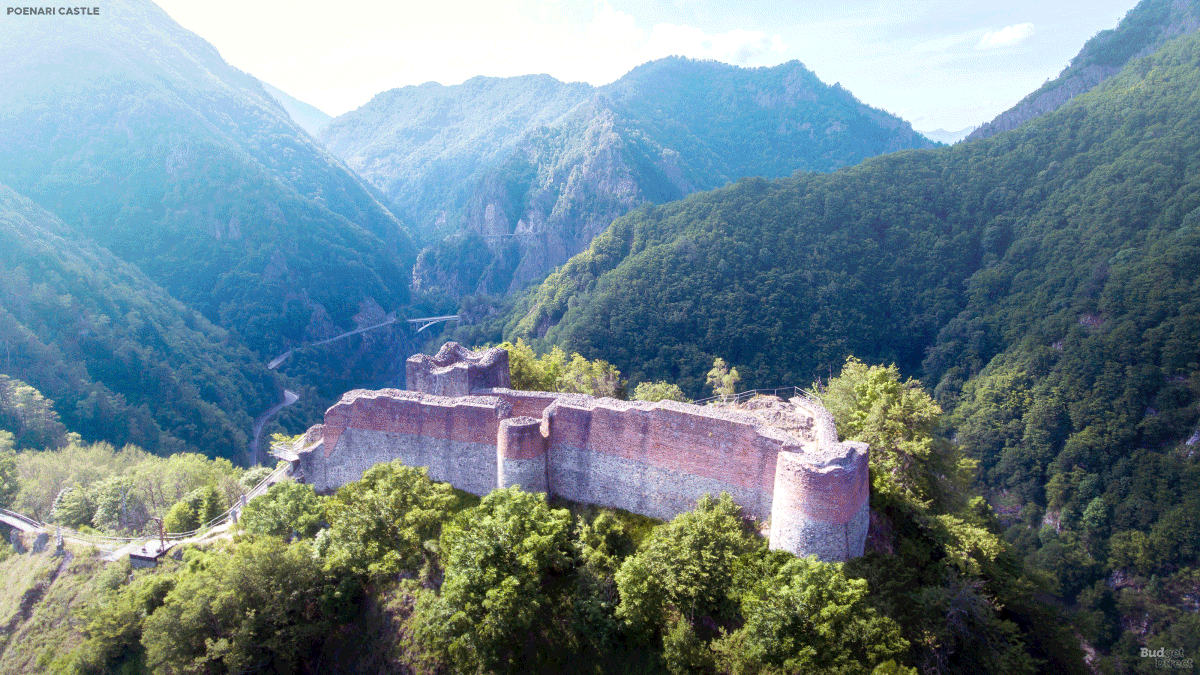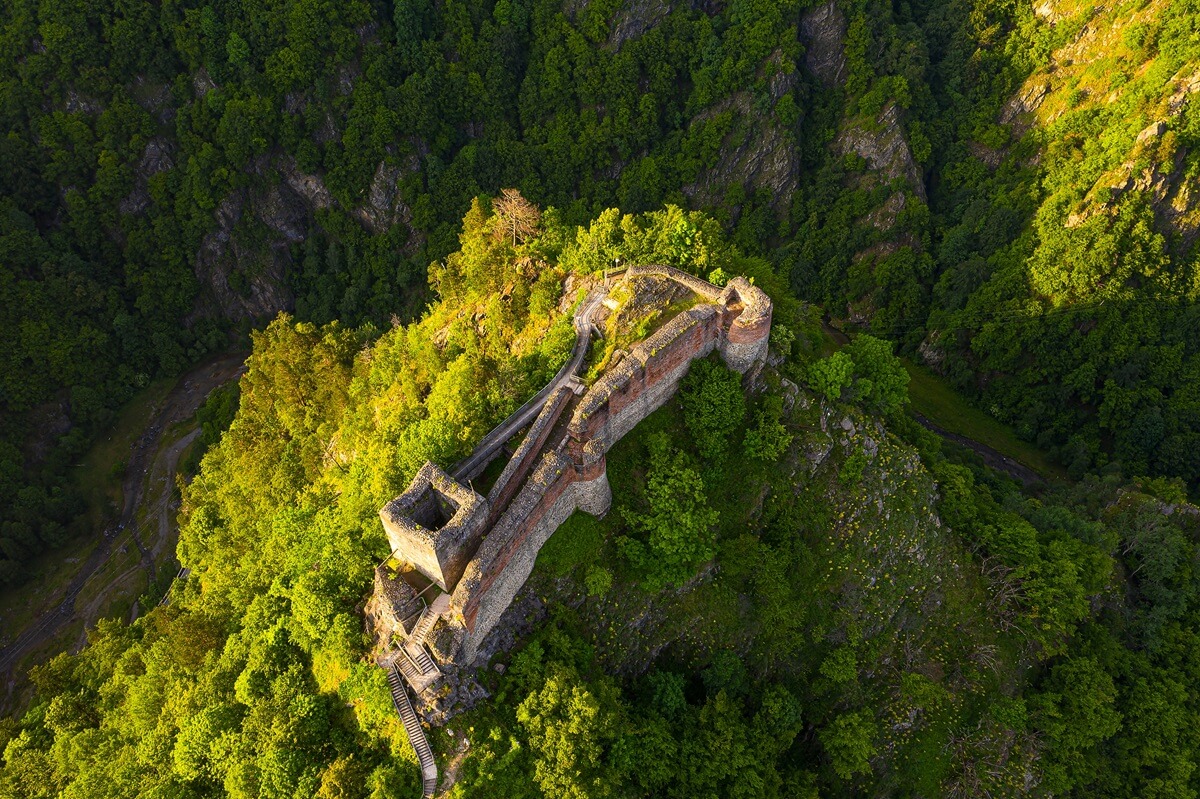
| Poenari (also Poienari) Fortress fast facts | |
|---|---|
| Location: | Wallachia region – southern Romania |
| Address: | comuna Arefu, DN 7C, (108 miles northwest of Bucharest) |
| Nearest large town: | Curtea de Arges (15 miles south) Târgoviște (86 miles southeast) |
| Nearesty train station: | Curtea de Arges |
| Nearesty bus stop: | Căpățânenii Ungureni |
| Hours: | 10 a.m. — 5 p.m., daily |
| Admission: | 30 lei (adults) / 20 lei (students and senior citizens) |
| Telephone: | (+4) 0248 212.561 |
The remains of Poenari (also spelled Poienari) Fortress - Prince Vlad Tepes Draculea citadel ("Cetatea lui Țepeş Vodă") - stand high on a Carpathian Mountains cliff, overlooking Arges River. Commissioned at the beginning of the 13th century by prince Negru Vodă ruler of Wallachia (southern Romania), the castle changed names and residents a few times over the centuries. The fortress served as a shelter for voivodes, the country's treasury or as a place of imprisonment, for boyars guilty of "swindling".
Voivode Vlad Țepeș - Draculea (Vlad the Impaler) recognized the potential of the fortress and
ordered that the structure be enlarged and consolidated, turning Poenari into one of his secondary residence.
Archaeological research shows a number of aspects related to the history of this fortress:
The initial core of the fortress was represented by a rectangular, four levels, tower (28 ft. x 28ft.),
erected in the early 1300s or even late 1200s.
The tower was built of rough stone, bonded with mortar, without a foundation, directly on the rock.
In the mid-1400s, during the reign of voivode Vlad the Impaler,
a 200 feet curtain wall and three semi-circular towers were added.
The Byzantine technique was used to erect the walls:
the outer faces of the wall were filled with emplecton (rough stone bound with earth or lime)
then reinforced with a grid of wooden beams.
The top plates (upper parts of the walls) and floors were then paved with brick.
Unhappy with Vlad Tepes' severe punishment (impaling) of robbers, idlers and traitors many boyars and merchants in Walachia planned to overthrow their the ruler. Vlad learned of the boyars' intentions and ordered them to be arrested and forced to work to expand and strengthen Poenari fortress. Those who survived the completion of the construction were released.
Poenari Fortress has an elongated shape and featured four watch towers, three round and one prismatic. Its walls are about 10-feet; due to the steep slope below their height looks much greater. When the Turks attacked and captured the castle in 1462, Vlad escaped via a secret passageway leading north through the mountains.

On the hilltop opposite to peak Cetăţuia, on which Poenari fortress lays, there is a trail leading to the top, paved with stone. The Ottomans built this acessway to transport their cannons to bombard the fortress, the only way to penetrate its fortifications. The road has since been nicknamed the "Turk's Road".
Although the castle was used for a few more centuries, after Vlad's death in 1476, it was eventually abandoned again in the first half of the 16th century and left to the ravages of time and weather. A major landslide, in 1888, and the 1915 earthquake brought down a portion of the northern wall of the castle which crashed into the river far below. The castle underwent repairs and the remnants of its walls and towers stand to this day.
Visitors must climb 1,480 steps to reach Poenari Fortress, an impressive fortification perched high above the surrounding area. The local authorities are considering building a tram car (cremaillere) to facilitate acces to the fortress.

More about Prince Vlad Tepes (Draculea) and his refuge in the Carpathian Mountains
» Cetatea Poienari - Arges County Museum
» Dracula Legend
» The Writing of "In the Footsteps of Dracula - A Personal Journey
and Travel Guide" by Steven P. Unger
» Romania's Scenic Drives - amazing journeys to unique destinations!



